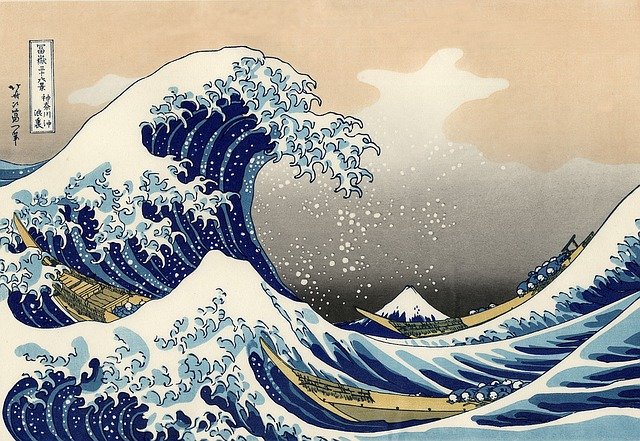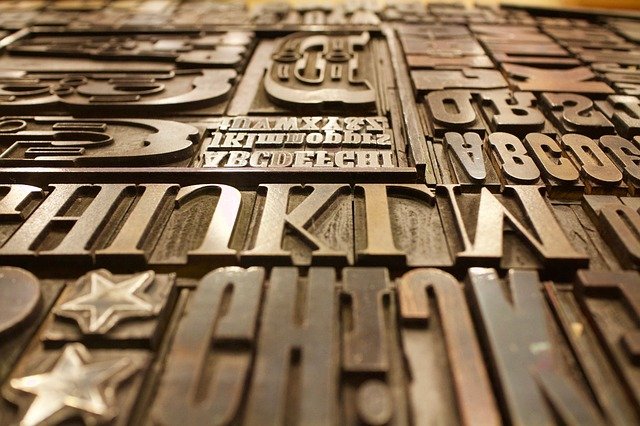Japanese woodblock printing has created some of the most beautiful and popular images ever made. The technique remains popular today, and artists all over the world carry on its traditions. While the work is time-consuming, it employs simple tools, and it's a wonderful art form anyone can practise.
Tools
Woodblock prints can be made by a single individual in the comfort of their home or as part of a larger operation with presses for faster production. The affordable tools and materials make this art style a popular project for children, adult hobbyists, and professional artists alike. All you need is a block of wood, basic wood-carving blades, and ink.
- Cherry wood (sakura) is the best wood for woodblock printing.
- Although paper is traditional for Japanese woodblock prints, you can also use fabric or other media as a base for your image.
- It took around a hundred years after woodblock prints became popular in Japan for multicolour printing techniques to develop.
Technique
A woodblock print begins with an image. An artist sketches their design onto a piece of wood or pastes a thin paper sketch with their design onto the wood, which they use as a guide to carve the image. Any space the artist doesn't want to print on they carve out, leaving a raised relief of their work. Finally, the artist covers the relief in ink and presses it onto paper, silk, or another medium. The image left on the medium is the woodblock print.
- It took four people to make a traditional woodblock print: the designer, the engraver, the printer, and the publisher.
- Woodblock prints produce a mirrored image of the raised image on the block.
- You can add watercolours to a printed image or print in multiple steps with multiple blocks to add colours.
Origins
Woodblock printmaking began in Asia around the same time Buddhism became a popular religion in China. Printing Buddhist scriptures with woodblocks are mentioned in a book from the Tang Dynasty. The Japanese adopted the practice of printing scriptures with woodblocks, and they began using them for designs as well as text in the 1600s.
- The earliest surviving woodblock prints came from China, and they were printed on silk rather than the paper Japanese woodblock prints eventually used.
- In the beginning, only the government could afford to carve and print from woodblocks.
- The Japanese developed movable-type woodblock printing techniques based on equipment and methods taken from Korea.
Famous Japanese Woodblock Prints
The most famous Japanese woodblock prints come from the Edo and Meiji periods. During these times, Japan saw sweeping cultural, political, and artistic shifts that made art more affordable and popular. Japanese woodblock prints using these styles are called ukiyo-e.
- Many famous prints depict the "Floating World," including subjects like courtesans and kabuki performers. Three Favorite Beauties by Kitagawa Utamaro is a great example.
- Historical depictions became popular in the 1800s, and The Great Wave Off Kanagawa remains one of the most recognizable woodblock prints in history.
- The beauty of nature has always been a major theme in ukiyo-e, and works like Plum Estate, Kameido by Utagawa Hiroshige showcase this beautifully.
Additional Resources
- Pictures of the Floating World: Watch traditional Japanese printmaking in action.
- History of Woodblock Printing in Japan: Learn how the rough technique first arrived on the islands, how the art form grew, and how the Japanese made the style their own.
- Japanese Woodblock Print Highlights: Enjoy a quick tour of the best of the best, guided by the Brigham Young University Museum of Art.
- Collecting Guide: Japanese Woodblock Prints: Christie's auction house explains what makes these pieces of history so valuable and what sets them apart.
- Great Ukiyo-e Artists From Japan: Learn more about the people and stories behind some of the most famous Japanese artworks in history.
- Woodblock Printing in Edo Japan: History shapes art, and understanding the world of the Edo era can help you better enjoy woodblock prints as art.
- Art of Modernization: Meiji-Era Woodblock Prints: The Meiji-era changed Japan and its art forever. See how woodblock prints told the story as it evolved.
- Art Meets Commerce: Learn how woodblock printing and illustrated books drove the Japanese publishing industry.
- Five Greats of Japanese Woodblock Printing: Explore this art style through some of its greatest masters.
- History and Characteristics of Ukiyo-e: Get a historical overview and sharp definition of the art form.
- Fleeting Pleasures: Learn more about the ideology and worldview that inspired the subjects and composition of great Japanese woodblock prints.
- How Japanese Woodblock Prints Transformed van Gogh's Dreams of Utopia: Ukiyo-e has influenced Western art for hundreds of years, and the work of a famous impressionist is a terrific example.
- UCSF Japanese Woodblock Collection: Wander through this prestigious university's gallery of prints and gain a better insight with an insightful introduction to the collection
- Under the Wave Off Kanagawa : Probably the most famous woodblock print of all time, this piece of art narrates an epic tale from history.
- Katsushika Hokusai: This artist was one of the greatest woodblock printmakers in history, and you're likely already familiar with some of his work, even if you don't know his name.
- Takiyasha the Witch and the Skeleton Spectre : This famous and spooky print tells a story based partly on history, partly on myth, and entirely about revenge.
- Utagawa Kuniyoshi: A talented artist of the Edo period, Kuniyoshi's art remains both popular and relevant.
- One Hundred Famous Views of Edo : Beautiful, detailed, and varied, this woodblock print series serves as not only a great piece of art but also a window into history.
- Utagawa Hiroshige: Widely considered the last great master of the ukiyo-e genre, Hiroshige created a large catalogue of work that still fascinates viewers.
- Yoshitoshi: Spirit and Spectacle: This artist pushed woodblock art in new directions and helped keep the art form relevant and interesting during the rise of photography and cheaper manufacturing techniques.
- Hashiguchi Goyo: An artist who mastered more than one medium, Hashiguchi moved from Western-style oil painting to a revival of woodblock prints with a sensitive, impressionistic focus.
- Objects of Beauty: Women in Ukiyo-e Prints: Women had a special place as subjects in specific genres of woodblock prints, and their careful depictions reveal more than pretty faces.
- Cutting and Printing Your Own Woodblock: Learn the basics of the art form, then make your own piece.
- How to Make a Woodblock Print: Get step-by-step instructions for beginners.
- Relief Printing Supplies and Techniques: The right tools will make your art easier to master and give you better results. This guide will show you how to use them as well.
- How to Make a Woodcut: Get tips from a modern master on woodblock design and technique before you get started.
- Testing a Block for a Woodcut: A great print begins with good materials, and this guide will help you find the perfect piece of wood to start working with.
- Japanese Woodblock Printmaking: Get a quick overview of the full process, including what paper artists traditionally use.
- Adding Watercolor to Woodcuts: Although simple prints are beautiful, artists have expanded the range of their woodblock prints with extra colour.
- Printmaking Essentials: This colourful guide helps beginners create exciting and unique woodblock prints.
- How to Make Ukiyo-e: Although designed for children, this Japanese website covers the traditional woodblock printing process with famous artwork as examples in a way that's great for adults, too.



